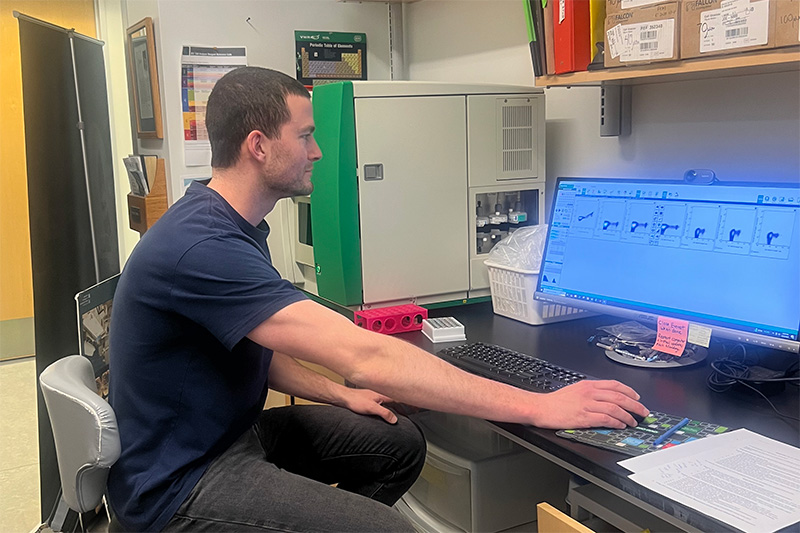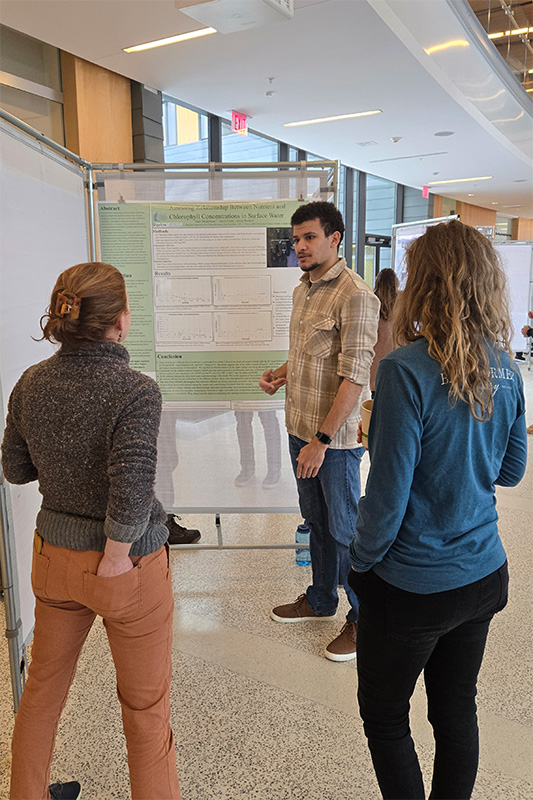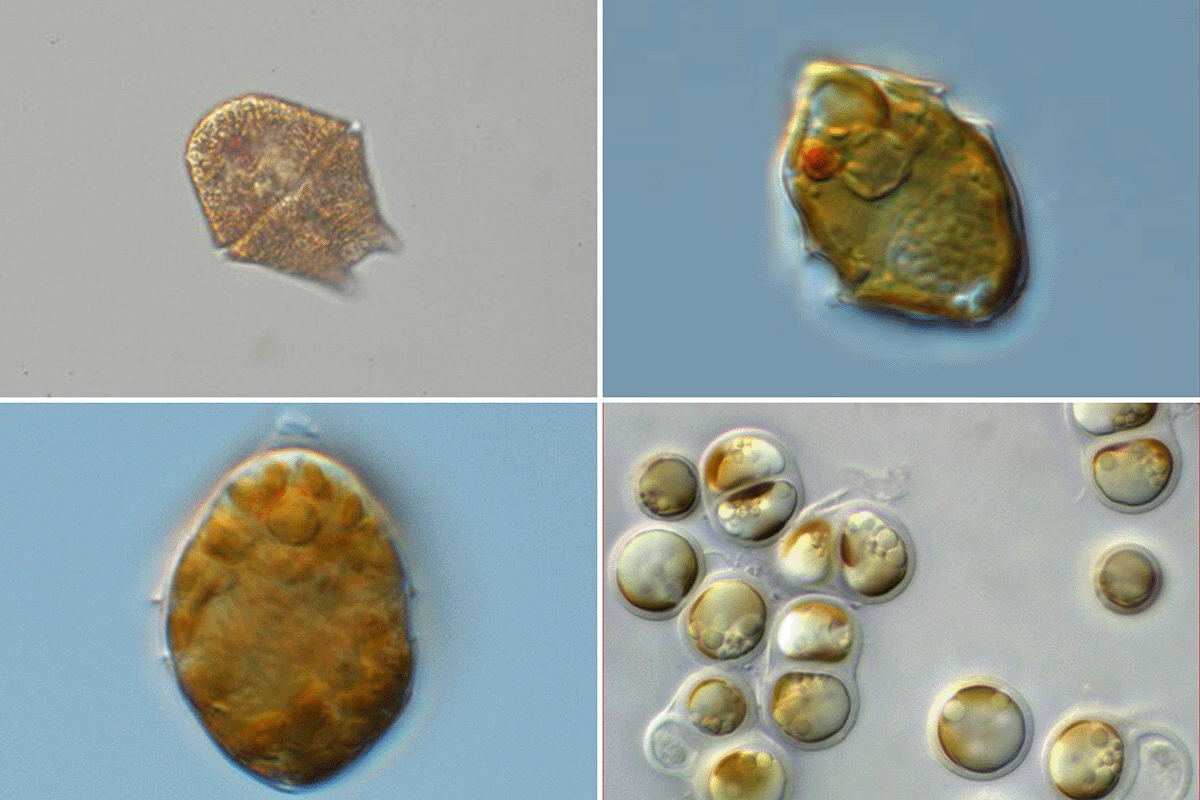Complex Experiments Help Unlock Mixotrophy Mysteries
Ecologists traditionally classified organisms as heterotrophs or autotrophs. Autotrophs, like plants, can produce their own food using sunlight or chemical energy. Heterotrophs, like humans, can’t, so they must consume prey or directly absorb nutrients from the environment.
In recent years, though, that paradigm has broken down as scientists have discovered how many organisms fall on a spectrum between those two options. Mixotrophs, as these flexible feeders are known, can switch between photosynthesis and other ways of obtaining food, or other “trophic modes.” Like an insurance policy, that flexibility gives mixotrophs more options for survival.
Scientists are still working to understand exactly how — and under what conditions — mixotrophs will switch trophic mode, which is essential to predict how they, and the food web around them, may adapt to changing conditions.
That’s where a team of researchers and students from Bigelow Laboratory and the Virginia Institute of Marine Science come in. Funded by the National Science Foundation, they’re designing complex laboratory experiments to understand how the availability of nutrients and light affect the amount of energy different mixotrophic microbes get from each trophic mode. Studying that behavior in the lab will help scientists better measure the occurrence of mixotrophy and its ecosystem impact in the field.
“The ability to survive and thrive in diverse conditions may give these organisms a competitive advantage, but it’s hard to predict precisely how this flexibility will enable mixotrophs to withstand changes in their environment,” said Isaac Miller, a postdoctoral scientist at Bigelow Laboratory leading the experiments. “We’re trying to answer that question in a way that can be applied to varying conditions and different mixotrophs, all with their own wild behaviors and preferences.”
Miller began at Bigelow Laboratory in January 2024. For the last year, he’s been designing experiments for four species of plankton known to be mixotrophic. Meanwhile, collaborators at the Virginia Institute of Marine Science are doing the same for four other species.

For each one, the task is to figure out, first, whether the microbes react more to changes in light or nutrients. Then, the scientists can observe how each species grows and feeds — literally counting how many cells of “prey” each microbe eats — as the scientists dial the levels of light and nutrients up and down. The eventual goal is to use stable isotope probing, a method for tracing the movement of carbon through a system, to quantify how much energy the organisms are getting from photosynthesis versus actual food.
The team is particularly interested in whether a cell’s size plays a role in those patterns. The hypothesis is that smaller cells may favor autotrophy, since they have more surface area relative to volume, which is valuable for photosynthesis. Meanwhile, larger cells may be quicker to switch to heterotrophy because it’s easier for them to eat other organisms. Because mixotrophy itself is hard to directly observe in nature, the hope is that the size of a microbe could be used as a proxy in the field for its feeding preferences.
“We’re trying to mimic what can happen in the wild when there’s low light or nutrient-limited waters to make these experiments relevant to the real world,” Miller said. “If we can measure how feeding changes in different conditions, and determine whether size is a good predictive tool of those changes, that gets us one step closer to saying with confidence when and where mixotrophy is actually happening in the ocean.”
Developing improved methods for measuring mixotrophy in the field, Miller said, is the “golden ticket” for this relatively new field of ecology.

None of this work, he added, would be possible without the contributions of students. The first experiments for the project were kicked off in 2022 by Mason Trottier, a participant in Bigelow Laboratory’s Sea Change Semester program from Maine Maritime Academy. Jay Krithivas, an REU student from Northeastern University, continued the work in 2023. And last year, Miller mentored another Sea Change Semester student and a summer intern. Those students — Vaun Natalroman from Texas A&M Corpus Christi and Alex Mapula from Texas A&M Galveston — were both invaluable, Miller said, for figuring out the right experimental conditions to spur mixotrophy for two of the four species they’re examining.
“We pushed our students to identify questions that would point us in the direction we need to go for this broader project,” Miller said. “Much of the work this past year has been about troubleshooting, so the students’ work is helpful for designing better experiments and getting us one step closer to being able to do this in the field one day.”
Photo Captions:
Photo 1: Scientists are examining four species of plankton known to be mixotrophic (Clockwise from top left: Akashiwo sanguinea, Heterocapsa triquetra, Ochromonas, and Scrippsiella acuminata; Courtesy of the National Center for Marine Algae and Microbiota).
Photo 2: Postdoctoral Scientist Isaac Miller is running experiments to understand microbial feeding habits using, among other tools, flow cytometry to isolate and count predator and prey cells (Credit: Keir Macartney).
Photo 3: The research of students like Vaun Natalroman, a participant in the Sea Change Semester in 2024, has been instrumental to helping design experiments to understand different organisms’ feeding habits (Credit: Aislyn Keyes).

